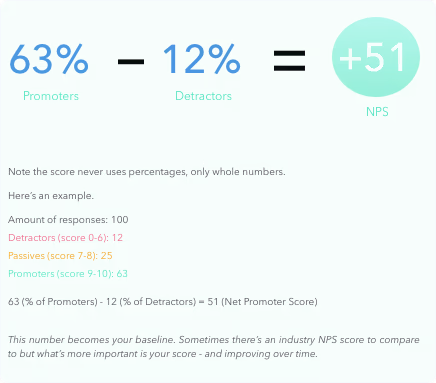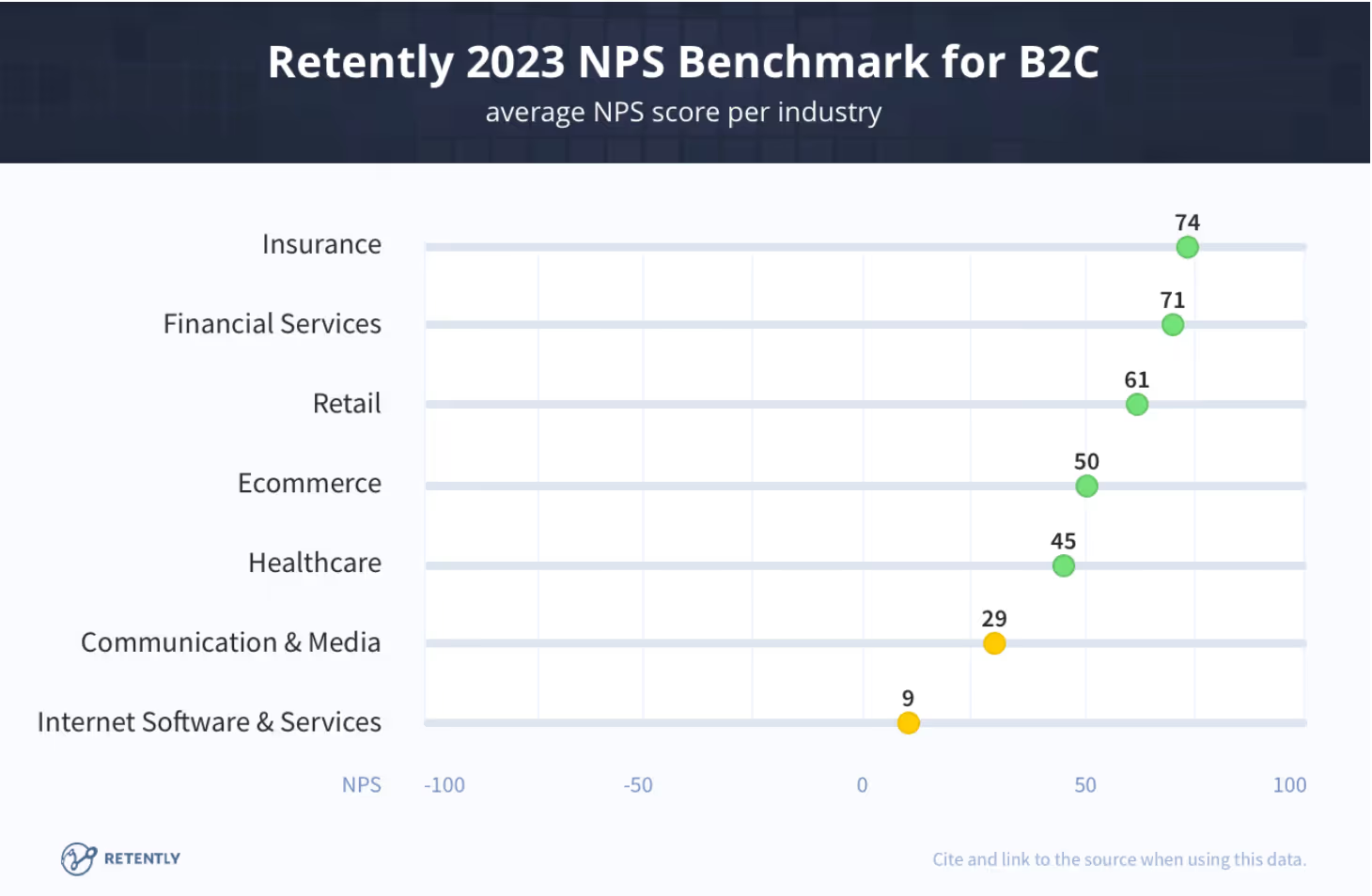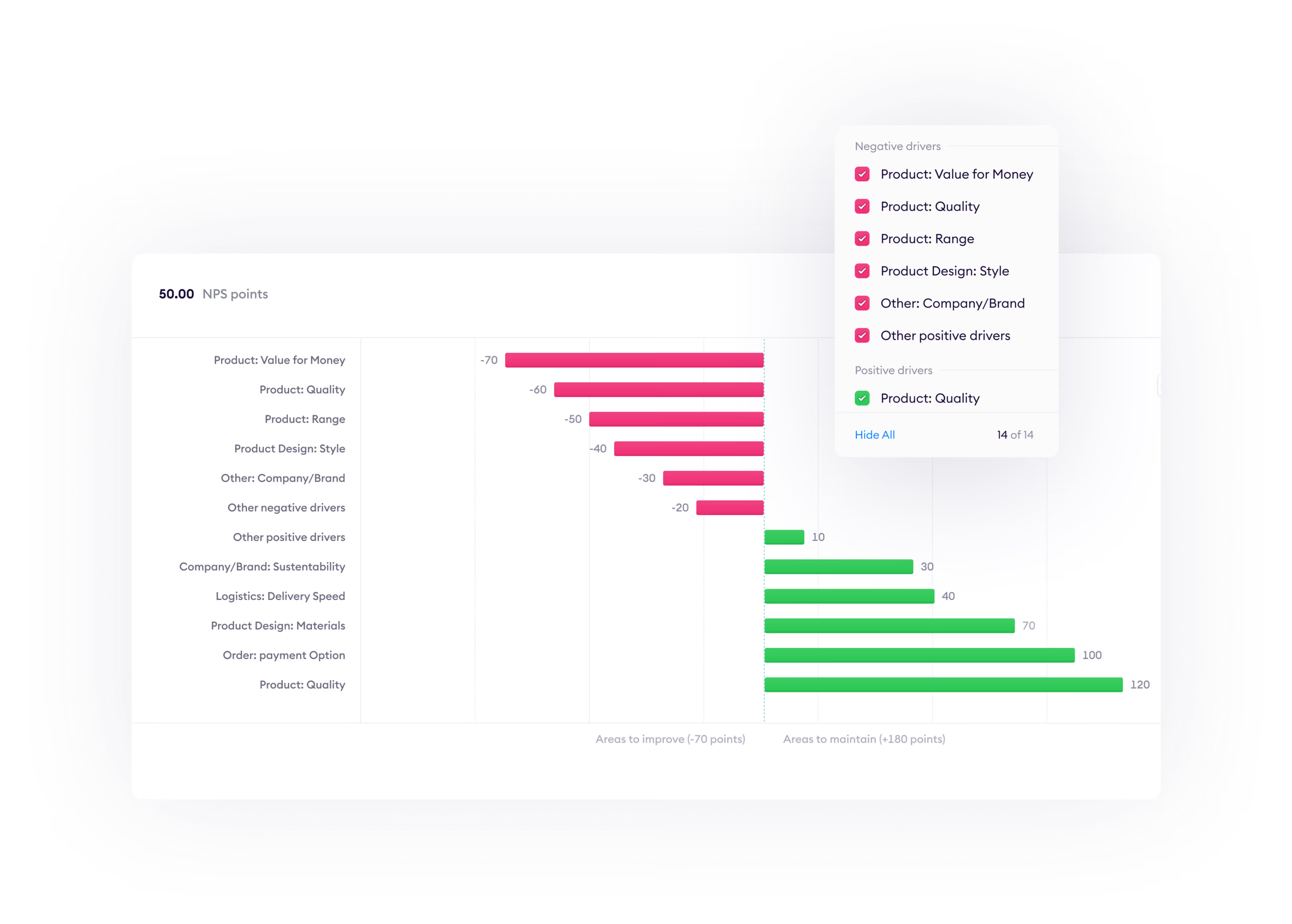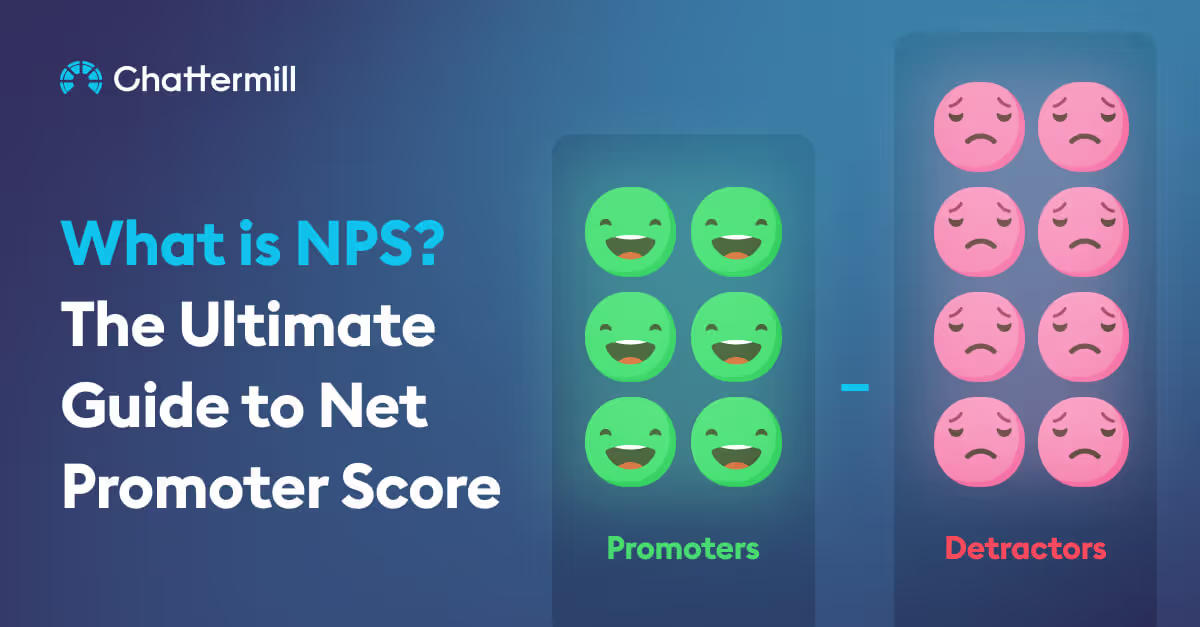We all follow a well-trodden path when making important decisions – like buying a new car, buying a life insurance plan, or planning a dream vacation.
First, we turn to our phones and search online to gather research and insights. Then, we speak to our friends and family for their opinions.
These recommendations hold immense power for both you and your customers. 91% of people regularly or occasionally read online reviews. 84% trust those online reviews just as much as a personal recommendation.
Let that sink in for a moment.
This means that no matter how hard you work on your promotional emails, display ads, or quirky email subject lines, a single customer's negative experience with your brand could cost you new business.
Customers also tend to share their negative experiences about your brand much more than positive ones – they're almost three times as likely to talk about a bad experience, in fact.
In today's world, thanks to the power of social media, your customers can instantly share their recommendations—or vent their frustrations—with their entire networks at the mere touch of a button.
This means gathering customer feedback and addressing pain points is crucial to preventing negative experiences and reviews and delighting your customers so much that they become enthusiastic brand advocates, spreading the word to their friends and family.
Enter NPS®, or Net Promoter Score.
What is Net Promoter Score?
Net Promoter Score (NPS) is a metric used to measure customer loyalty and satisfaction towards your company, brand, product, or service. It measures how likely your customers are to recommend your business to a friend.
NPS is a number or ranking between -100 and +100 assigned to your brand.
It is based on asking the following question (or a similarly worded one) to a sample of your customers:
“On a scale of 1-10, how likely is it that you would recommend us to a friend?”
It is a simple and effective way to understand better what customers think about your products, services, and the experience you give them.
NPS is built on the basis that every company can divide their customers into three distinct buckets - promoters, passives and detractors and customers are categorized based on their response to an NPS survey question - “How likely is it that you would recommend us to a friend?” on a scale of 0-10.

The goal is to discover patterns inside the data. For promoters, do more of what works. For detractors, do less of what’s causing customers to leave your product. For passive, ‘ignore’ them for now. If you work on decreasing detractors and increasing promoters, you’ll address the passives over time. The primary goal is to identify pain points in your system that are creating repeatable results.
How do you calculate Net Promoter Score?
Once you have asked a sample of your customers the NPS survey question above, you can then separate them into the following categories:
Detractors
Detractors are those who rank the likelihood of recommending your brand to a friend anywhere between 0 and 6.
Simply put, they are your least happy customers. More than 80% of negative word-of-mouth opinion comes from this group. They are most likely to churn and go on to shop with a competitor. And they will most likely deter potential new customers from trying you out.
Passives
Passive consumers rank the likelihood of recommending you at 7 or 8.
They are satisfied for now but can defect at any time, and their referral rates are as much as 50% lower than promoters.
On average, their customer lifetime value (CLTV) is less than half that of promoters.
Promoters
Promoters are your biggest fans and will score you at either 9 or 10.
They are evangelists for your brand and actively advocate for your products on your behalf.
They bring in the majority of referrals. They are most likely to be loyal to your brand. And they have a higher CLTV.
The calculation…
The NPS calculation itself is straightforward.
The score is arrived at by deducting the percentage of your detractors from the percentage of your promoters.
So, for example, if 63% of your customers are promoters and 12% are detractors, your NPS would be +51.

Relational vs. transactional NPS programs
NPS is well-known for its simplicity as a brand health metric – but it doesn’t end at simply giving your organization a score.
How consumers feel can depend on where they are on the customer journey. For instance, they may feel more positive towards your brand if the exceptional CX you have given them is still fresh in their mind.
It is essential, therefore, to have an understanding of the difference between relational and transactional NPS.
Relational NPS seeks to give you a score based on your customers' general feelings toward your brand. It is not targeted as such and will potentially include feedback from those who might have yet to have an interaction with your brand very recently.
Transactional NPS, on the other hand, seeks to know what your customers think about your brand after a specific interaction. Transactional NPS survey questions are targeted at customers at specific points on the customer journey – such as via a post-purchase email or in a short questionnaire after a customer support phone call.
Both relational and transactional NPS programs have value for brands. Both can be used to get a comprehensive understanding of what your customers think at all points of their journey with you – even if they are going through a period of relatively low engagement with your channels.
Why Is NPS Important?
It measures customer loyalty.
In the first place, NPS is a great way to get a measure of how loyal your customers are.
Generally, brands that boast a high NPS have more promoters than detractors. They will be the ones with a more loyal customer base.
Follow-up questions using free text fields can provide more insight here. There may be something within the reasons given by your detractors which indicates why they are disappointed and unlikely to return. Likewise, feedback from promoters may show you what exactly is driving them to return repeatedly.
It helps you prioritize reaching out to detractors.
NPS is an excellent step towards segmenting your customer base.
As we have seen, 80% of any negative sentiment about your brand will come from your detractors, who are most likely to churn. That said, it is still easier and more cost-effective to promote to these existing customers than investing in trying to acquire new ones.
Being able to separate your detractors and gaining feedback from them specifically means you can address the issues they may have. You can also target them directly with better personalized CX – even deals and offers – to improve their experience with you.
It identifies ways to improve.
Net promoter scores can be a great way to identify what areas of brand experience you need to improve – in both a general sense with relational NPS and on a more granular level with the use of transactional NPS.
Businesses should always be working to improve their CX. Finding the drivers behind why your detractors are giving you a low score or why passives feel indifferent to your brand is a straightforward way to find areas for improvement and start prioritizing what needs to be addressed.
What are the quick wins? And what are the things that would need a deeper strategy and more buy-in from other stakeholders? NPS can help you figure this out.
It boosts referral marketing.
We know promoters – those who score you a 9 or 10 – are the power fans. They advocate for you to their friends and family across online channels and offline conversations.
Most of the referrals to your business come from this group of users. It follows that boosting this proportion of your user base – I.e., by turning your passives into promoters – is a surefire way to boost your referral marketing.
NPS can help you unpick what it is about the experiences your passives have when it comes to your brand that can be better improved to make them become promoters – and potentially evangelists – for your products and services.
How do you create an NPS Survey?
NPS is a beautifully simple metric.
But as we have already covered to some degree, it can be even more valuable to uncover why your detractors, passives, and promoters are giving you the score they are.
An NPS survey achieves this. As you will see, it doesn’t have to be intrusive or overly time-consuming for the customer. It is best practice to try and keep your NPS surveys concise.
Demographic questions
Demographic categories such as age, gender, and location are tried and tested ways for businesses to start to segment their customers.
It can be very valuable for NPS surveys to include demographic questions, as they can help ascertain what drives specific scores.
Perhaps users of a certain age are more likely to be passive about the experience you offer them. Or maybe, users living in a particular location are giving a low transactional NPS score because delivery to that area is slower than others.
Demographic questions are an excellent first step to understanding your customers comprehensively.
The Net Promoter Score question
On a scale of 1-10, how likely is it that you would recommend us to a friend?
It wouldn’t be an NPS survey without this question (or one that is worded very close to it).
The responses from this can go towards separating your respondents into the detractors, passives, and promoters categories. You can then subtract the percentage of detractors from the percentage of promoters to give you your net promoter score.
What reason for your score?
You’ve asked for the score. Now ask for the reason.
Responses from this field can offer great insight into why your customers feel the way they do about you.
Tools such as Chattermill can take free text feedback, transform it into insights, and highlight trends among the responses at scale.
Perhaps 80% of your detractors are mentioning one specific product. Or maybe a noticeable number of passive users are mentioning a competitor. All of this is valuable insight!
How can we make your experience better?
Consumers can often be forthcoming about what you, as a brand, can do to address any issues they have.
They may highlight something unclear from the numerical data or the other feedback fields.
Again, with Chattermill’s ability to process responses at scale, it is possible to see whether many individual customers have the same or similar ideas as to what you could do to give them a better experience.
Permission to follow up with the customer
Not all customers want a follow-up after a bad experience, and that’s fine.
The good thing about this question is that for those who grant permission, there is an opportunity for your support team to reach out to a customer directly.
You can assure them that they are being listened to and that you are doing whatever needs to be done to solve the problem.
It is possible to turn a bad customer experience into a good one.
What is a good Net Promoter Score?
In simple terms, the higher your NPS, the better the health of your brand.
Organizations with more promoters than detractors boast a higher proportion of loyal customers who return more frequently and drive more referrals to the business.
On the flip side, if you have more detractors than promoters and your NPS is negative, your business will likely be experiencing higher churn rates and more potential customers being deterred from seeking your products or services.
Benchmarking your NPS against other industry averages in your vertical is also possible.

Data from Retently gathered in 2023 sees that the average NPS for Insurance businesses is 74. For eCommerce brands, the average is a bit lower: 50. The Internet Software & Services industry ranks even lower than that, with NPS averaging just 9.
Working out your own NPS and seeing how it compares with your industry average is another valuable way to know whether you are providing your customers with the products, services, and experiences they expect.
How to find out what’s really driving your NPS

Net promoter score is an excellent indicator of your brand's health, but it is only part of the story.
A proper NPS program seeks to understand why your customers are giving you the ranking they are.
What is it about your CX that is causing your customers to be detractors, passives, or promoters?
A good NPS survey needs to include the all-important How likely is it that you would recommend us to a friend? question. But additional prompts such as What is the reason for your score?, and What could we do to make your experience better? are also vital for uncovering what your customers really think and feel.
But what happens when you have all these rankings and all of these pieces of unstructured feedback?
Ultimately, NPS won't provide much value if it cannot be made actionable.
That’s where Chattermill comes in.
Chattermill helps you understand which trends influence your NPS score, discover actionable insights, and make smarter CX decisions.
Our AI identifies critical patterns and emerging trends to help you find key insights with just a few clicks. The result? you can understand which themes are impacting your NPS score, drill down into the underlying issues, and understand what and where you need to improve to deliver better customer experiences.

Even two decades since it was first formulated, NPS is still a useful metric. But with Chattermill's Unified Customer Intelligence platform, it suddenly becomes a critical key to understanding what your customers want, and helping you drive greater loyalty and retention.
Want to learn more? Book a Chattermill demo
Net Promoter Score (NPS): FAQs
What is Net Promoter Score (NPS)?
Net Promoter Score (NPS) is a customer loyalty metric that measures how likely customers are to recommend a company, product, or service to others. It is based on a single survey question rated from 0 to 10.
How is NPS calculated?
NPS is calculated by subtracting the percentage of detractors (scores 0–6) from the percentage of promoters (scores 9–10). Passives (scores 7–8) are not included in the calculation.
Why is NPS important for businesses?
NPS provides a simple way to measure customer loyalty and track satisfaction over time. A higher score indicates stronger customer advocacy, while a lower score highlights areas for improvement.
What is a good NPS score?
A positive score above 0 means more promoters than detractors. Scores above 30 are considered strong, while scores above 70 are often seen as world-class.
How can businesses improve their NPS?
Improvements come from listening to feedback, addressing customer pain points, personalizing experiences, and closing the loop by showing customers that their input leads to meaningful changes.
How often should NPS be measured?
NPS should be measured regularly, such as quarterly or after key customer interactions, to track trends and identify shifts in sentiment.
How does NPS compare to CSAT and CES?
- NPS measures likelihood to recommend.
- CSAT measures satisfaction with a specific interaction.
- CES measures ease of completing an interaction.
Together, these metrics provide a fuller view of customer experience.
Can NPS predict customer loyalty?
Yes. NPS is a strong indicator of long-term loyalty and growth. Customers who are promoters are more likely to repurchase, refer others, and stay with a brand over time.















